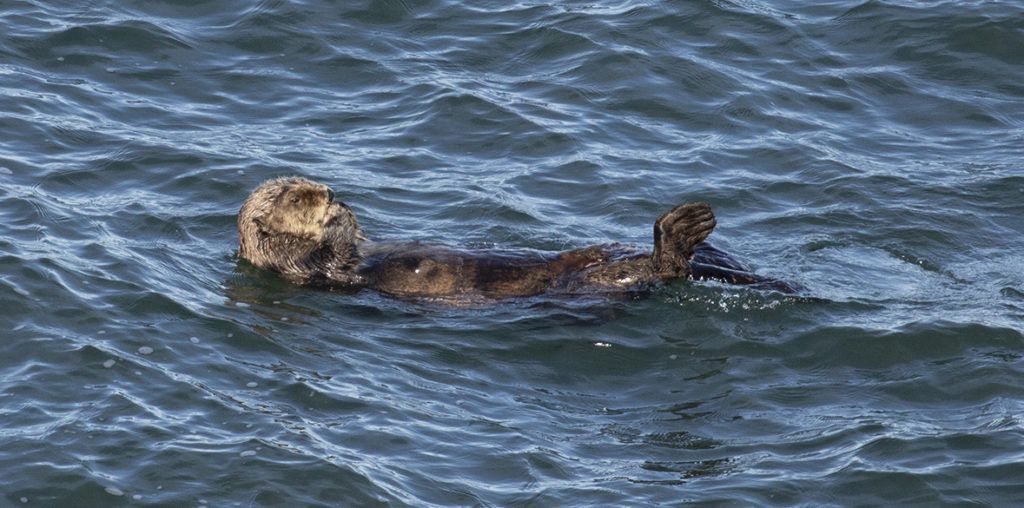
By ZACH URNESS/Salem Statesman Journal
The Center for Biological Diversity wants the federal government to get moving on a plan to reintroduce sea otters on the Oregon coast.
The national environmental group submitted a petition Thursday, under the Endangered Species Act, to reintroduce the sea otter to their native habitat from the San Francisco through Oregon.
The idea of returning otters to the coast picked up momentum following a study by the U.S. Fish and Wildlife Service that said reintroduction was “feasible” and “would benefit the near-shore marine ecosystem and have an overall socioeconomic benefit to coastal communities.”
But the agency stopped short of recommending reintroduction and has said any action on getting otters in the water was still “4 to 5 years off at best.”
The Center for Biological Diversity wants to speed things along.
“Bringing the sea otter back to the broader West Coast would be an unparalleled conservation success story,” said Kristin Carden, a senior scientist at the center. “Not only would the sea otters thrive, but they would also help restore vital kelp forest and sea grass ecosystems.”
The petition, among other things, requires Fish and Wildlife Service to grant or deny the request and compels a scientifically defensible answer in a reasonable time, Carden said.
“Optimistically, that would be within a year and we could see otters in the water within a couple of years,” she said. “That said, it will take time for the government to engage with stakeholders and do all required outreach. In the meantime, the agency could immediately start laying groundwork for the reintroduction.”
The case for sea otters in Oregon has been pushed for years by the Elakha Alliance of Siletz, which published economic and feasibility studies on reintroduction. That laid the groundwork for the Fish and Wildlife Service study that highlighted substantial benefits otters could bring.
In response to the petition, agency spokeswoman Jodie Delavan said the Fish and Wildlife Service was taking the next steps toward considering “any potential reintroduction effort.”
“Our next step is to engage with stakeholders, including ocean users and coastal communities, on the potential impacts of reintroduction,” Delavan said. “The service aims to be inclusive, thoughtful, and scientifically sound as we consider actions to support sea otter recovery now and in the future.”
Otters historically

Otters, native to the Oregon Coast, were wiped out by widespread hunting in the 1700s and 1800s. The last known wild sea otter was killed in Oregon in 1906 south of Depoe Bay.
Today, wild sea otters occasionally visit Oregon from populations mainly in Washington, but none have stayed permanently, leaving a 900-mile gap of Pacific Coast with no populations from Half Moon Bay in California to central Washington.
Studies have found that sea otters play a fundamental role in the ecological health of near-shore ecosystems. They eat sea urchins, whose numbers have exploded on the Oregon coast, which helps keep seagrass and kelp forests in balance, the Fish and Wildlife Service study said.
Oregon attempted reintroduction, along with a collection of other sites on the West Coast, from 1969 to 1972. Otters were released in Oregon at Cape Arago and Port Orford. They persisted for about a decade before the population “petered out,” Michele Zwartjes, field supervisor at the Fish and Wildlife Service’s Oregon coast field office in Newport, told the Statesman Journal last year.
But improvements in the way reintroductions happen could make a big difference the second time around.
If officials did try again in Oregon, they could use a combination of wild sub-adult otters from populations that have reached carrying capacity, along with others who have been raised by surrogate parents in aquariums and raised with a minimum of contact, Zwartjes said. That might improve the number that stayed.
Even with the study leaning positive, the Fish and Wildlife Service study expressly said it wasn’t making a recommendation as to whether sea otter reintroduction should take place. That would take another four to five years of community outreach and regulatory hurdles.
Carden believes it could go more swiftly.
“We would like to keep the momentum of the feasibility assessment going and, hopefully, lead to a commitment to act,” she said.
- A version of this story originally appeared in the Salem Statesman Journal on Jan. 20.


